#unidentified bus accident
Explore tagged Tumblr posts
Text
Two Motorcyclists Killed in Bus Accident Near Chaibasa
Tragic accident near Chaibasa leaves two dead after collision with bus. Two motorcyclists were killed on the spot after being hit by an unidentified bus near Jamdih Kocha in the Tonto police station area of Chaibasa. CHAIBASA – Two young men died instantly in a road accident involving an unidentified bus near Chaibasa. The deceased were identified as Shubham Gupta from Nimdih, Saraikela…

View On WordPress
#राज्य#bus accident Jamshedpur#Chaibasa incident#Jamshedpur latest news#Laxmi bus accident#Reliance Jio employees accident#road accident Chaibasa#road safety news#state#Tonto police station news#unidentified bus accident#young men killed in accident
0 notes
Text
Guys I support democracy lions!
#ride the cyclone#canada#ike brovloski#oken okenollal okenburg#jan joe#banjo?#dollcore#oh say can you see bu the lioness has childreen she makes#Joe bi die n#politics#im trapped on the tag factory#your lucky number is 42#0#headless#100k notes#perfect dolls is dead#unidentified body#true crime#roller coaster accident#declining mental health 😍💅✨
9 notes
·
View notes
Text
"the best rtc song is talia" "no it's the ballad of jane doe" "no it's noel's lament" no shut up you're all wrong it's the new birthday song. it's the song where this choir of dead teenagers all decided to make that day a birthday for an unidentifiable dead girl they didn't even know because she'd just sang about having no name or reason to celebrate or sense of who she used to be. it's the song ocean makes that the choir joins in on because jane didn't have a name and they couldn't sing the "dear ___" of the real happy birthday song without one so she decided after being selfish the whole musical and her whole life to make up a new one on the spot for her. it's the song that pinpoints the moment where not only the choir stops seeing jane as a "freaky monster" and starts seeing her as a kid who got killed in a random accident just like the rest of them and came together to treat her like one of their own but also the moment where ocean begins to change from a selfish character willing to throw her friends under the bus to a character who will make a new song for a complete stranger so she can have something of a proper birthday and who will eventually give up her chance to send herself back to life in favor of giving this chance to that very same girl. its the new birthday song. do you hear me. it's the new bir


1K notes
·
View notes
Text

so hey, after, idk, a while, I finally ended up in the right place at the right time. by accident.
he was getting ready to propose in the winter, now is the second half of the summer season. probably less than a year passed though, so that's a win!
in the meantime i have fallen out with his gf. he and i are besties for life, lol.



turns out this is a whole thing, and he invited half the town on this surprise trip to the woods. no idea where they've gotten a working bus too.

this is giving me some evil boss lady from dark souls vibe.


they even give you an option to back out at some point. but i couldn't just end it at "...and then he brought his gf to the unidentified woods. the end."


*boss music starts*

i am kind of glad now that i'm not the one marrying him.

Seb did bring a camera though...
#lol#i am so sorry#very jealous#this is a very good romance story tbh#i am enjoying playing second fiddle to npcs#yri the architect#stardew valley#stardew farmer#text post#stardew valley spoilers#stardew valley mods#sv mods#sv modded#sv charles
4 notes
·
View notes
Photo
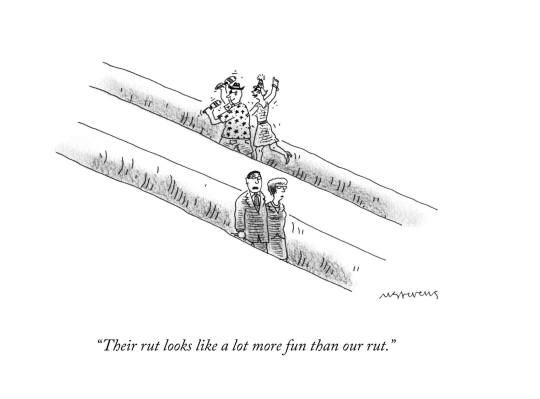
A Norfolk Southern Corporation train carrying hazardous chemicals derailed after an axle malfunction in East Palestine, Ohio. The 50-car train, which had been on fire for miles before it ran aground, produced clouds of noxious fumes that led to the evacuation of nearly 5,000 people, some of whom were extras in the film adaptation of White Noise, and the deaths of domestic and wild animals in the area. Norfolk Southern, which has paid its executives millions, spent billions on stock buybacks, and declined a shareholder demand to “assess, review, and mitigate risks of hazardous material transportation,” agreed to pay the city of East Palestine $25,000.
Aid and rescue workers could not immediately reach victims of the 7.8-magnitude earthquake and its aftershocks, some of which were nearly as big as the first quake, in Syria because of sanctions against the country, which were suspended by the U.S. government days after the disaster; more than 37,000 people across Turkey and Syria have died and tens of thousands have been injured by the quakes. Turkish president Recep Tayyip Erdoğan—who came to power over 20 years ago after a previous administration’s mishandling of an earthquake response, and has himself been criticized for slow rescue efforts as he faces an election in three months—announced that he would allocate more than $5.3 billion to relief. “It’s an issue that will take a coalition to solve,” said Microsoft, a computer manufacturer and software company worth $1.9 trillion, in response to a report outlining changes to small-scale cobalt mining in the Democratic Republic of the Congo, which is plagued by fatal cave-ins and child labor. Thirty-three members of Congress pushed for the U.S. Labor secretary to punish automotive companies whose Alabama factories have been employing children as young as 12, while lawmakers in Iowa and Minnesota have introduced legislation to allow minors as young as 14 to work in slaughterhouses, demolition, roofing, and other jobs that require the operation of heavy machinery. Missouri’s state house voted against prohibiting children from open-carrying firearms unless under adult supervision.
Attorneys for Richard “Alex” Murdaugh, the third consecutive member of his family to serve as South Carolina Lowcountry solicitor, who is accused of murdering his wife, Maggie, and youngest son, Paul (who was implicated in the death of Mallory Beach in a drunken boating accident) and of diverting millions of dollars in damages-settlement money intended for his clients and their families, including the sons of the family’s maid, who died in a trip-and-fall accident at one of the Murdaughs’ residences, to a bank account he controlled, moved for a mistrial over hearsay, but were denied. The majority-white, Republican Mississippi House approved a bill that will create a new district court in the majority-black, Democratic city of Jacksonville, whose judges will be appointed rather than elected, and the mayor of Fort Worth, Texas, said she supported the police chief’s proposed community oversight board, whose members he would select. “People are scared, upset, & are believing crazy things being said on the internet,” tweeted Marjorie Taylor Greene, who carried a white balloon around the Capitol the day of the State of the Union address, as she questioned the timing of three downed unidentified aircraft over North America: “[T]here is a lack of transparency from the Biden admin and simple explanations are owed to the people.” The White House denied the existence of aliens and a report that the United States had blown up the Nord Stream 2 pipeline. A farmer advocacy organization said that record-high egg prices are being caused by collusion among egg producers, who are exaggerating the effects of avian flu on their industry, and the McDonald’s corporation agreed to remove an advertisement for its McCrispy sandwich inside a bus shelter in Cornwall that is opposite a road sign for the area’s crematorium.
A decade-long study revealed that instant noodles were responsible for nearly a third of all hospital cases of scalded children. Scientists found that female orcas who support their sons into adulthood suffer. Eighty-one bales of cocaine, weighing three and a half tons in total, were discovered floating off the coast of New Zealand. Members of Oregon’s liquor and cannabis commission were found to have abused their power in order to get deeply discounted bottles of Pappy Van Winkle’s 23-year-old whiskey. A 24-year-old man who abducted monkeys from the Dallas Zoo to keep as pets told police he would do it again, and a Nashville man resisted arrest by thrusting his cat into an officer’s face. A robot escaped a Pennsylvania supermarket. King Charles III wore a holey sock to an appearance at a Brick Lane mosque.
—Violet Lucca :: [Harpers Magazine :: Weekly Review]
5 notes
·
View notes
Text

My tags:

Pretty Face was an echhi high school comedy manga I picked up when I was in high school, back in like... 2007?? 2008?

It's about a guy whose bus gets into a terrible accident on a field trip, and he comes out of it with severe burns to his face that render him totally unidentifiable. He spends like a year in a coma and in the meantime is given facial reconstruction surgery. The plastic surgeon, (because he is a plastic surgeon in a comedy manga) decides that because they don't know the victim's identity, the best thing to do is base the new face on a photograph that was in the victim's wallet. The boy wakes up from his coma with a much slimmer body due to muscle atrophy and the exact likeness of his crush on his face. He's homeless because his parents thought he died in the crash and out of grief moved to another country, until he bumps into his crush, who apparently all this time has had a twin sister who just so happened to run away from home years ago.
So yeah, there's all sorts of silly nonsense hijinks that one might expect in an echhi comedy but when I recently reread it I really felt like not once does it get overtly transphobic which is wild. There's some gender essentialism in the form of "all boys are strong/all girls are weak" type stuff but like it's weirdly funny how normal it acts about someone with a male body navigating the challenge of passing as female. You'd think it would lean into the deeply problematic "man passing as a woman to enter women's spaces" concept as the source of humor but somehow it manages to sidle around that completely. This boy stole someone's identity by accident and is too busy trying not to get caught to "take advantage" if it. The specter of predatory males disguising themselves to get into the girl's locker room is excersized and banished by this kid trying so so hard to get out of having to go into the locker room. It's a really weird little series that is pretty vapid and goofy but it's honestly comical how non offensive it manages to be, all things considered.

9K notes
·
View notes
Text
TAMRA JEWEL KEEPNESS.
FEW CHILDREN IN CANADA JUST VANISH. Fewer still stay gone for longer than a couple of days. Some are found alive, others are hurt or killed, but rarely does a child simply disappear. The RCMP’s National Centre for Missing Persons and Unidentified Remains database lists 147 missing children, in a country of more than 35 million people. Of the sixty children under the age of twelve, a quarter are thought to have been abducted by their parents. A large portion of the others were lost to apparent accidents or misadventure, falling through ice or swept away in the pull of wild rivers, their bodies never recovered. The database shows twenty-four children in the past sixty years who have inexplicably disappeared. Because there are so few, we know them. In Edmonton, there is Tania Murrell, six when she vanished while walking home from school for lunch in January 1983. In Toronto, Nicole Morin, eight when she disappeared from a condominium building in July 1985. Michael Dunahee was four years old when he went missing from a playground in Victoria in 1991. In Regina, there is only Tamra Keepness.
THE LAST TIME anyone saw Tamra, she was five years old, with bobbed black hair and soft, round cheeks. In one picture, she wears a T-shirt dotted with flowers, standing against the colourful collage of a classroom wall. Her smile is broad and open, her eyes lively. She was so smart that her mother called her “my little Einstein,” so feisty that when a little boy pushed her once, Tamra shoved him right back, and harder. She liked playing Mario Kart on Nintendo and climbing her favourite tree, down the block from her house.
July 6, 2004, was the first time Sergeant Ron Weir would hear Tamra’s name. He was getting ready to leave on vacation that day when he got an urgent call back to the police station. Weir was a veteran cop with the Regina Police Service and head of emergency services, which included search and rescue. In a meeting, officers from the major crimes unit laid out what they knew: sometime between the night of Monday, July 5, and the morning of Tuesday, July 6, a five-year-old girl had gone missing from her home in central Regina.
Weir had been a police officer for twenty years. He knew that kids often went missing and turned up safe a short time later. Sixty-five percent of missing children and teens are located within the first day, and almost 90 percent within the first week. But Weir also knew that Tamra was too young to get far as a runaway. Patrol officers had already checked the neighbourhood to make sure Tamra hadn’t wandered away or ended up at the house of a playmate or relative, as was often the case with missing children. They’d found nothing. Even in the early hours of the investigation, Weir suspected this case would be different.
TAMRA LIVED with her mother, stepfather, and five siblings at 1834 Ottawa Street, a shabby brown-and-white two-storey with a windowed porch at the front. The house stood between 11th and 12th avenues, just east of downtown Regina. The neighbourhood was a mix of long-time elderly residents, young families drawn by low prices for heritage houses, and ramshackle homes where residents struggled with poverty and addiction. The area was sometimes known as the “low stroll,” a place where women and girls sold their bodies for drugs or booze and men drove around looking to buy them, circling the neighbourhood in trucks and station wagons. Many of the women and girls who lived or worked in the area were First Nations, like Tamra. Long before calls for a federal inquiry into missing and murdered Indigenous women would dominate the political conversation, women were going missing from those streets. It was from that same area that nineteen-year-old Annette Kelly Peigan disappeared in 1983, followed by eighteen-year-old Patsy Favel in 1984 and Joyce Tillotson in 1993. Two years later, two young white men picked up a woman named Pamela George, sexually assaulted her, and beat her to death.
The last public development came in November 2014, when a Reddit user posted to the website a scrawled map with the words: “Location of Tamra Keepness, check the wells.”
Tamra’s house was less than a block from the Oskana Centre, a halfway house for federal parolees, and not far from the Salvation Army’s Waterston House, a residence and shelter inhabited by former inmates and men struggling with drugs, alcohol, and psychiatric issues. Residents of both facilities had been responsible for serious attacks in the past. Just four months earlier, convicted violent sex offender Randy Burgmann had lured a woman into his room at Waterston House with alcohol, before violently sexually assaulting her and leaving her beside a dumpster to die. The Oskana Centre had previously been home to both serial rapist Larry Deckert and Billy John Francis Whitedeer, who began committing violent sexual offences on children when he was ten years old. A few blocks farther was the Ehrle Hotel, one of the worst bars in town, from which patrons spilled soggy and staggering onto the sidewalk, and which appeared regularly in police reports and court testimony.
Police also had serious questions about what was happening at 1834 Ottawa Street. There was a broken window and blood spatter in the porch. Social Services had been involved with the family since not long after the oldest child was born in 1993, and there had been more than fifty reports made to crisis workers, most often about Tamra’s mother’s use of alcohol and drugs, and neglect of the children. Her mother’s boyfriend had a history of violence and domestic assault. In most cases, investigators knew, children are hurt by people closest to them.
POLICE STARTED with a thorough search of the area immediately around the home, then cast their efforts outward in an expanding grid. As the sun rose on the morning of July 7, 2004, the search effort intensified. First, there were ten officers, then twenty, then more. Some officers accompanied trained volunteer search teams; others questioned family members and potential witnesses, going door-to-door gathering leads or chasing down tips. The RCMP training academy provided cadets, and members of the public soon began arriving on their own to help.
Police set up a command-centre bus in the parking lot of a nearby church, from which Weir co-ordinated the search. Though it was an urban environment, the terrain posed serious challenges. The area was filled with overgrown yards, empty houses, piles of garbage. Tamra weighed forty pounds, and stood three foot five. There were so many places a child could hide or get trapped or be held, where a child’s body could be concealed or dumped. Searchers in orange vests worked in grids, knocking on doors, inspecting junked cars and crumbling garages, peering under discarded mattresses and piles of wood, looking down manholes. Police stopped garbage pickups, checking all the bins in the neighbourhood, the trash putrid and reeking in the summer heat. Some bins had already been emptied, so plans were made to search the dump as well.
And what if she had been taken farther? Not far away were industrial areas, large abandoned lots and buildings, Wascana Creek, and beyond that, the vast Prairie. With a thirteen-hour head start, someone in a vehicle could have had Tamra in Vancouver before she was reported missing.
When they were not speaking to police, members of Tamra’s family waited anxiously on the fringes, watching the searchers, eyeing the growing assembly of reporters and news crews holding out microphones and pointing camera lenses. “It’s not like her to go off by herself,” said Tamra’s father, Troy Keepness, sitting on the front steps of his ex-wife’s house, his voice tight with worry. “We’re trying to do our best to get her back.”
Weir worked in the command-centre bus, surrounded by maps and whiteboards. A scribe logged every aspect of the search in real time, recording ideas and progress. No one wanted to break, not for food or rest. Everyone knew the situation grew more serious with every passing hour. As the heat of the day gave way to evening, Weir stood outside and looked up. A strong wind had come in, and storm clouds were spreading, darkening the Prairie sky.
The next day, police strung crime-scene tape around Tamra’s house and the one next door, drawing it through the back alley and across six garages, long slashes of yellow dividing the street. Officers guarded the perimeter while forensic investigators went in and out of the house in boots and masks. “While we don’t have any direct evidence that Tamra has come to any harm, we also don’t know where she is,” police spokeswoman Elizabeth Popowich told reporters. “And if, in fact, this comes to a point where we determine that she’s come to some harm and it’s because of a criminal act, this location could potentially be the scene of some evidence.”
THERE WERE three adults in the house that evening: the children’s mother, Lorena Keepness; her boyfriend, Dean McArthur; and a family friend named Russell Sheepskin, who had been staying with the family. All three had come and gone during the night, and investigators were starting to question their movements. There were no signs of forced entry to the house, and there were gaps, inconsistencies in their timelines that didn’t make sense to investigators.
The story the three told publicly, compiled from various interviews, was that Lorena and McArthur got into an argument while watching a movie on Monday evening, and McArthur and Sheepskin left the house around 8:30 p.m. to go drinking. The men returned briefly to drop off a bottle of formula for the baby, then left again. Lorena went out around 11 p.m, kissing Tamra goodbye before she went. The oldest child in the house was ten-year-old Summer, the youngest was Lorena and McArthur’s nine-month-old baby. Lorena returned briefly to check on the children and then left again around midnight. At about 3 a.m., Sheepskin returned home drunk and saw Tamra sleeping on the couch. Not long after, McArthur got back to the house and assaulted Sheepskin on the porch, punching him through a window and then stomping on his head. (Both men later said the fight had nothing to do with Tamra.) Sheepskin walked alone to the hospital to get stitches, and McArthur went to stay at his aunt’s house a few blocks away. Though it should have been a short walk, he said he got lost and kept passing out as he walked there. He didn’t arrive for at least two hours, until 5 or 5:30 a.m. Meanwhile, Lorena got home around 3:15 or 3:30 a.m., climbed in through a window, and passed out on the couch. She said that she got up to undo the latch on the door for her mother around 8 or 9 a.m. and that the two eldest children, Summer and Rayne, left on their own in the morning to attend a summer day-camp. Lorena didn’t realize Tamra wasn’t there until about three hours later, when the five-year-old didn’t come downstairs. At 12:16 p.m., a family member called the police and told them Tamra was missing.
Rayne, who was eight, said he had gone to bed squeezed into the space between the wall and mattresses piled on the floor in an upstairs bedroom. He told his mother he felt Tamra get up at some point, the slight movement of a child’s weight. All he could remember was that it was light outside.
FRIDAY WAS hot again and wet from the previous night’s rain. An odour of decay hung in the air around Ottawa Street. Tamra had been gone three full days and become national news. Her picture seemed to be everywhere, hanging on street poles and store windows. In news stories, she became “missing five-year-old Tamra Keepness,” but more often she was just Tamra, as if we knew her. The front page of the Regina Leader-Post spoke directly to her, asking, “Tamra, Where Did You Go?”
Tips flooded in to police. On the street, there were rumours that Tamra had been seen at a dollar store with an older woman. Business owners in the neighbourhood said detectives had been looking for a middle-aged white man named Roch or Rocky, but police wouldn’t confirm whether that was related to the search. Lorena and McArthur said they gave police the names of five people they thought could be suspects, including a man who had befriended Tamra and later been discovered to be a pedophile. For a while, there was even a theory that Tamra had never existed at all, that she had been a scam to get extra money from Social Services. (Hospital records proved that was not the case.)
Searchers were coming from around the province to volunteer, streaming into the city from towns and First Nations communities, motivated by the faces of their own children or grandchildren to help in whatever way they could. “I’ve got a boy, and he’s twenty-one,” said Jerry Scott, one of the volunteers who joined the search. “And if he left, I’d go nuts, too.” Around the city, people organized vigils and barbecues, brought water and snacks for the searchers, wrapped ribbons around trees to show their support. Some left teddy bears and angels on the steps of Tamra’s house. Days of intensive searches had turned up lots of items that seemed as though they could be connected—clothing, a child’s shoe—but none of it belonged to Tamra. “I’m starting to go on different conclusions, like maybe someone took her, I don’t know,” Troy Keepness said. “I just hope nobody would hurt my daughter.”
WHEN Tamra had been gone a week, police announced they were suspending the ground searches. At a press conference, Regina police chief Cal Johnston announced a $25,000 reward for information and vowed, “We will find Tamra.” Police questioned sex offenders living in the area and obtained surveillance tapes from convenience stores, bars, gas stations, and the Greyhound bus depot nearby. Johnston confirmed that “criminal interference with Tamra is a distinct possibility” and drew attention back to Tamra’s house and family. “There were comings and goings from the house that night that remain not fully explained to our satisfaction, and we continue to ask those questions,” he told reporters. He would not elaborate.
Tamra’s family was growing increasingly angry at the police, and the strain of the situation was starting to show. Lorena told reporters she’d signed consent forms for police to search her house and had given her DNA, but still she felt as if they were focusing too much on her family and not enough on trying to find Tamra. She was angry that police hadn’t closed the highways out of the city and that there was no Amber Alert because police said it didn’t meet the criteria. “I’m fed up,” she told reporters. “They are wasting time. This is my little girl we’re talking about.”
The family was growing frustrated with the media, too. Lorena’s mother yelled obscenities at reporters one day, and on another, members of the family nearly came to blows with a TV reporter doing a live update from the front lawn. They had been watching the news inside the house when they heard the reporter imply what many in the city were already wondering: If not someone in that house, then who?
On July 19, two weeks after Tamra had been reported missing, police charged McArthur with assaulting Sheepskin the night Tamra disappeared. McArthur told reporters he had been interrogated for twenty hours, not about the assault, but about Tamra and about what had gone on inside the house that night. “It was always the same questions, and they were assuming that I knew the answers to those questions, but I didn’t know the answers, and I still don’t know the answers,” he said. “I would never hurt a hair on that little girl’s head.”
Two days later, Tamra’s brothers and sisters were removed from the home by child-protection officers. Tamra’s twin sister wore messy pigtails and clutched a colouring book and a yellow blanket as two women led the children away down the front steps of the house. Neither government officials nor police would say whether the children’s seizure was related to Tamra’s disappearance. When the children were gone, police searched the house again.
One night late that summer, Tamra’s father, Troy, showed up at the house with a baseball bat and confronted her stepfather, McArthur. Troy was charged with assault, though McArthur later said police “got things misunderstood.” “Everybody’s looking for answers,” he said. “We more or less talked.”
LORENA KEEPNESS was fourteen years old when she ran away from her home on the White Bear First Nation, 200 kilometres southeast of Regina. She had been in residential school for about three months, but that wasn’t what did it. For her, it was the same ugly stuff at home. She found her way to Regina. When her mom tried to take her home, Lorena wouldn’t go. She lived on the streets instead.
She had her daughter Summer Wind when she was twenty, her son Rayne Dance not long after. It was after the ultrasound for her third baby that she walked home in a daze and told her husband, Troy, “We’re having twins.” She kept repeating it until it sunk in, and then they just stood together in the kitchen and laughed. Her mother said “Way to go!” but Lorena told her, “They came from God. Not like I planted those in me.”
The babies were born on September 1, 1998. Fraternal twin girls, each weighing more than six pounds, carried almost right to term and curved around one another like pieces of a puzzle. Lorena and Troy split up when the twins were little, and after that, the girls stayed sometimes with their mother, sometimes with their father or with other relatives. Lorena and Troy each struggled with substance abuse, and their lives were sometimes too troubled and unstable to have the children with them. At five, Tamra was bold and courageous, and protective of her twin sister. Once, Lorena heard a soft knock in the middle of the night and opened the door to find the twins standing there. The children had left their father’s house and walked four blocks back to Lorena’s in the middle of the night, Tamra leading her sister by the hand as they found their way through the dark. REGINA POLICE received more than a thousand tips in the first six weeks after Tamra’s disappearance. At one point, a Volkswagen van that had been stolen the night Tamra disappeared was found burned outside the city. A jail guard told police she and a former inmate had stolen it, picked up Tamra, and then dumped the child’s body in a ravine on the Muscowpetung First Nation. Ron Weir led a week-long search on Muscowpetung, draining multiple beaver dams with compressor pumps, while searchers slogged through water up to their hips. The jail guard later confessed she had made up the story. She was charged with mischief and wrote a letter apologizing to the police. In court, her lawyer said she had been trying to get her abusive boyfriend locked up again.
Returning from medical leave to the police department in the fall of 2004, superintendent Troy Hagen could feel how Tamra’s disappearance was weighing on his colleagues. Hagen noticed it in everyone he spoke to, from the police chief down, whether they were involved with the case or not. Sergeant Rod Buckingham, one of the lead investigators, was among those who felt the growing frustration. “It’s a mystery,” he would say. “And I don’t like mysteries.”
Officers had spoken with more than 6,000 people by then, but there had been no arrests, and leads were drying up. Shortly after, a special task force was struck to re-examine the case, to see whether anything had been missed. The name of the project was iskwesis ayishowak e mamayahi, a Cree term meaning “little girl bring people together.”
TWELVE YEARS LATER, Lorena Keepness spends her days doing odd jobs and picking bottles, trading them in at the depot for cash. She is forty-three and lives with her eldest son in a rundown shack of a house on Victoria Avenue, a fifteen-minute walk from Ottawa Street. Lorena’s children were never permanently returned to her custody after the disappearance, and the three babies she had after that were all taken by Social Services, too. Tamra’s twin sister is seventeen now. Lorena says she is an athlete, smart and beautiful. Lorena lost her family pictures when someone threw all her stuff in the garbage a few years ago. The only photos she has of Tamra now are the ones on missing-child posters.
Tamra’s twin and her older sister, Summer, don’t want to be interviewed. Neither does Tamra’s father, Troy. McArthur couldn’t be reached. Lorena needs a six-pack of Black Ice beer to talk. She doesn’t really want to be interviewed either. She has never liked reporters or their questions, and it hurts to talk about that time. “But part of me wants to,” she says, as her face crumples. “Part of me needs to share what the fuck happened. Someone stole my child.”
Lorena has heard many theories about what happened to her daughter. Some believe Tamra wandered away and was abducted by a driver cruising the area or that she got lost, then crawled in somewhere so small she has never been found. Other theories focus on the adults in the house that night. Some officers will say off-the-record that they think Tamra is in the dump but that they just couldn’t find her in the mountains of debris. Many in the city believe that Lorena and McArthur sold or traded Tamra to pay off a cocaine debt. Lorena has heard that one the most. One night, she was at a bar and heard some women talking, loud enough so she could hear. “Yeah, she sold her kid for dope. She has a whole bunch of babies. She has kids just to sell them for drugs.” Her friend told her not to listen, but Lorena couldn’t ignore it. She swore at the women, promised she would get them for even thinking she could do that to her child. They met at the same bar again the next day, and that time they fought, a tangle of hair and fists. One of them had a knife and slashed her twice on the back of her arm. More scars to wear for life. It wasn’t the only time. One night, she was attacked in Moose Jaw. Not long ago, a woman shouted “Baby killer!” at her across the street.
Lorena and Dean McArthur are still together, on and off—“more on than off,” she says. Police tried hard to turn them against each other, but she always believed him in the end. He may be all kinds of things, she says, but he’s not a baby killer. “If I thought he did something to my daughter, I would have killed him myself,” she says. “I think the police were just so sure. They figured, ‘These guys are a bunch of nobodies. She did her own child.’ They already had their conclusions drawn before they even tried to look for anything.”
The suggestion she could have had something to do with her daughter’s disappearance still pushes Lorena to the point of violence. You can see her eyes flash, her muscles tighten at the question. But she holds back— it’s not worth going to jail. She’s had enough of the police, has grown used to the accusations. In the past twelve years, she’s repeated her story publicly many times, and it has never really changed.
REGINA POLICE have never released full details about the investigation into Tamra’s disappearance, on the grounds that it remains an open case that they still hope to solve. In an interview, Troy Hagen, now Regina’s police chief, would not speak about any working theories or confirm any specifics of the investigation, including whether one of the people questioned about Tamra’s disappearance had failed a polygraph test. Instead, Hagen echoed what police have said since the beginning: That there remain important unanswered questions about the comings and goings from the house on Ottawa Street that night. That they will continue to investigate every tip. That they won’t stop looking for Tamra until they find her. He pointed to cases in the United States where children have been gone for years, sometimes decades, and then been found alive. In Canada, twelve-year-old Abby Drover was held in an underground bunker in Port Moody, British Columbia, for six months after being abducted by her neighbour in 1976. There was an intensive search of her community—including by her abductor—but she had been only feet away from her house the entire time. She was found alive. It seems impossible, but it happens. “I refuse to lose hope,” Hagen says.
The years since Tamra’s disappearance have exposed the epidemic of missing and murdered Indigenous women in Canada. Suspected serial killers are facing charges in the Prairies, but there has been no public indication that Tamra’s disappearance may be connected to any of those cases. Hagen said police have also explored a possible connection with thirteen-year-old Courtney Struble, who disappeared from Estevan, a city 200 kilometres from Regina, four days after Tamra was last seen. Investigators initially believed that Struble was a runaway, and she had been gone for seven years before RCMP announced that her case had become a homicide investigation. No one has ever been charged, and her remains have never been located. Hagen says it’s strange to have two unsolved missing-children cases linked so closely in time and geographic proximity. He says the possibility of a connection was “very much” explored by police, but there doesn’t appear to be a correlation. The police investigation into Tamra’s disappearance is one of the largest and costliest in Regina’s history, but Hagen says it has never been about the money. If there were more leads or work for investigators, the police chief says he would reconvene the task force “in a heartbeat.” But the flood of tips has slowed. The reward for information that leads to finding her, now $50,000, sits unclaimed. The last public development came in November 2014, when a Reddit user with the name MySecretIsOut posted a scrawled map with the words: “Location of Tamra Keepness, check the wells.” The person later wrote that the map belonged to their grandmother and had come from a great-aunt who had visited an inmate in Alberta. “We, like many others, haven’t forgotten about you, Tamra, and continue to search and hope you are found,” the person posted. Police searched twenty-one wells around Muscowpetung but found nothing.
Sheepskin died on January 1, 2009, “with his family by his side,” according to his obituary. Many of the police officers who worked on Tamra’s case have retired or moved from the department to other jobs. Hagen says he thinks of Tamra whenever he is walking through the forest, not looking for her but always half expecting to see her there. Sometimes he looks at people he passes on the street, examining their faces and imagining what Tamra might look like now.
THROUGH THE YEARS, Lorena has developed her own theories about what happened to her daughter. These days, she mainly wonders about a drifter who used to stay with them, a woman Lorena knew from when she was a girl. A woman who sometimes told people she was pregnant even though she wasn’t, who Lorena knew by one name but whose medical documents said something else. The woman was around so much that Lorena’s children called her Big Auntie. Big Auntie had been staying at the house before Tamra disappeared, but left after she and Lorena had a falling out. Lorena says it took a long time to realize Big Auntie wasn’t coming around any more. When she did, she put word out on the streets, but no one there had seen her either. Big Auntie didn’t even show up for her own sister’s funeral in Regina a few years back. Lorena says she told the police about Big Auntie many times, but doesn’t know whether they ever found her, or whether they even looked. “She’s just gone now,” Lorena says. “Same time as my child.” Maybe it’s something. Or maybe Big Auntie is missing, too.
When I ask Lorena whether she thinks Tamra will ever be found, she struggles for an answer. “I don’t know,” she says. “But can I tell you about a dream I had?” There are two, both so vivid it’s as if they were real. In one, Tamra is inside a big house in a city Lorena has never seen. There are silk clothes draped around, and broad windows, and Tamra is upstairs, sitting on the edge of a bathtub putting on stockings. She is grown, with dark, shiny hair like her mother’s but cut straight all around. In the other dream, Tamra is still a little girl, running into her mother’s arms. “There you are!” Lorena says. “There you are!” She picks up her child and holds her, until Tamra wriggles free and is lost again.
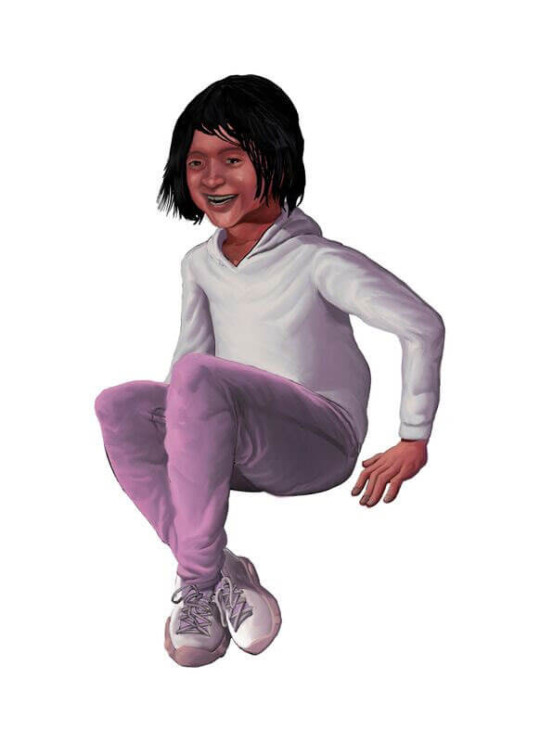
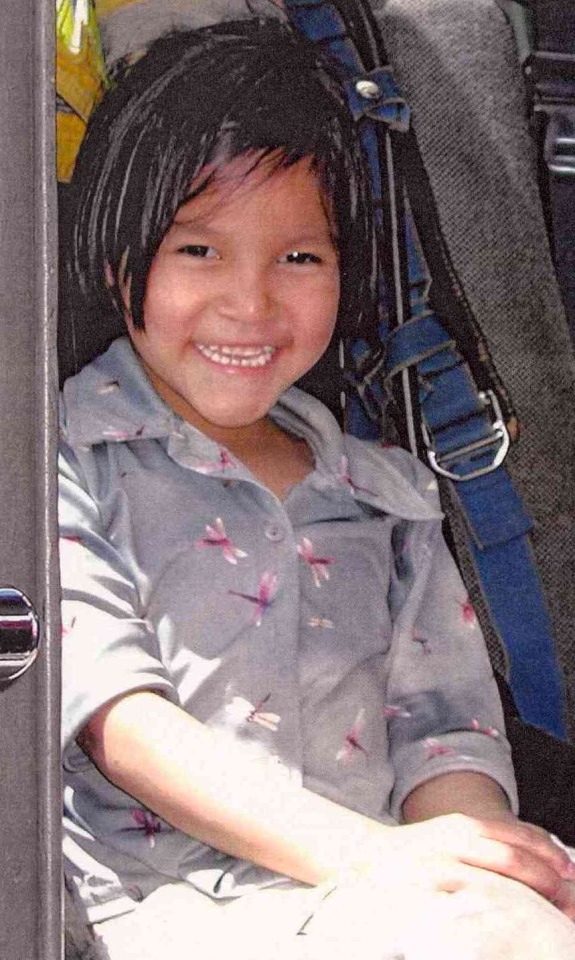
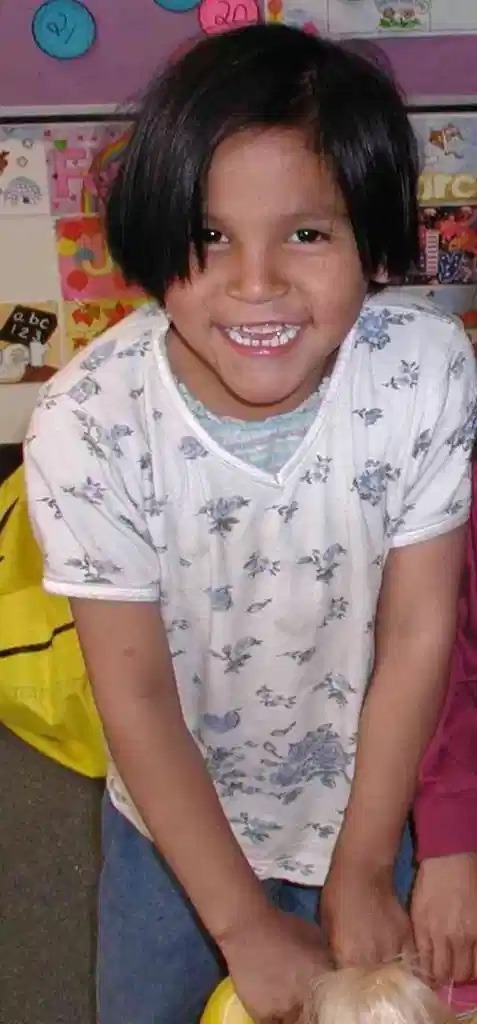
#indigenous#native#first nations#firstnations#aboriginal#firstpeoples#native american#canada#native canadian#indigenous people in canada#native canada#ndn#native people#ndn tumblr#northern indigenous#mmiwawareness#mmiw#mmiwg#Tamra Keepness#missing and murdered indigenous women and girls#missing and murdered indigenous women#north america#missing#no more stolen sisters#stolenland#canadian#indigenous lives matter#native lives matter#native issues#n8v tumblr
7 notes
·
View notes
Text
The Weepy Voiced Killer
TW: Crime Scene Photos, link to 911 calls
At Midnight on December 31st, 1980, police in St. Paul, Minnesota received a phone call detailing a murder. The voice was the first of many calls they would receive throughout the next few years, guiding them to Malberg Manufacturing Company machine shop because there was “a girl hurt there.” Upon police arrival, they found the body of 20-year-old, Karen Potack. The scene was grotesque in nature. She was lying naked in the snow and had been bludgeoned more than 10 times with a tire iron. She had been beaten to the point her skull was cracked open, exposing her brain; but she miraculously survived. Potack had apparently come into the city for a New Year’s Eve party with her sisters, leaving around midnight. She then wandered around the city intoxicated when she crossed paths with her assailant. Her injuries were so bad that she sustained multiple brain injuries and could not identify her attacker.
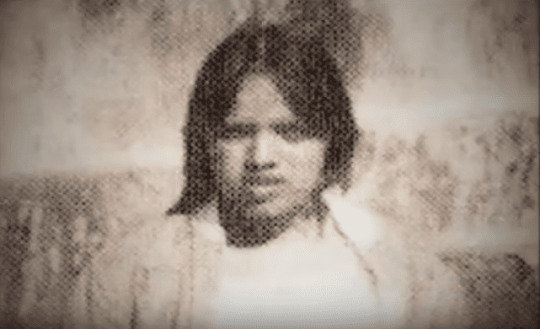
On June 3rd, 1981; a group of teenage boys found the body of 18-year-old, Kimberly Compton. The assailant later contacted Police in St. Paul again, pleading on the phone call: “God damn, will you find me? I just stabbed somebody with an ice pick. I can’t stop myself. I keep killing somebody.” His strange— almost weepy— voice in both calls, dubbed him the Weepy Voiced Killer in the media. Upon arriving at the scene, they discovered 18-year-old, Kimberly Compton. She was stabbed 61 times with the ice pick. Investigators were able to successfully trace the call to a pay phone across from a bar on the corner of St. Peter Street and the Bus Depot on 9th. Two days after the discovery of her body, police received another call; stating that he didn’t mean to kill Compton and that he would try not to kill anyone else. Part of the tape was released to the public in hopes that someone would be able to identify the voice. But the police lines were flooded with calls, which none seemed to be useful in identifying the man.
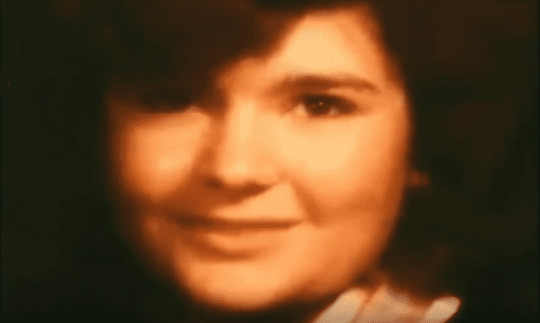
On July 21st, 1982, Carol Kellogg had driven to her best friend, Kathleen Greening’s, home in Roseville. They were scheduled to leave St. Paul on a vacation to Macinac Island. Carol had knocked on the door and let herself in when nobody answered the door. She called out for Kathleen and began to search room by room when there was no answer. Kellogg discovered Kathleen Greening’s body face up in the bathtub with her knees bent towards the front of the tub. Initially, her death was ruled as an accident. It wasn’t until years later, that her actual murdered would be linked to her case.
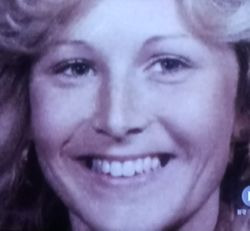
On August 6th, 1982, another body was found by a newspaper carrier on his route along the Mississippi River and 29th Street. She had been stabbed to death, and was identified as 40-year-old, Barbara Simons. The night before she had been at a bar called, the Hexagon. Simons apparently had offered a man she had met at the bar a cigarette and had told the waitress, “He’s cute. I hope he’s nice, since he’s giving me a ride home.” Again, the police received a call from the weepy voiced man, saying; “Please don’t talk, just listen… I’m sorry I killed that girl, I stabbed her 40 times. Kimberly Compton was the first, over in St. Paul.” Police wanted to talk to the man that had given Barbara a ride home the night before (August 5th, 1982). Witnesses described him as being in his 40’s, around 6 feet tall and 185 pounds. He was also said to have a dark complexion and receding black hair.
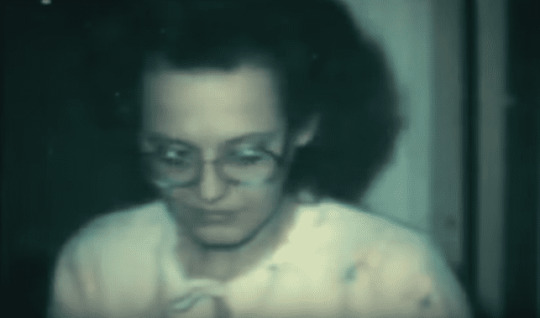
As police attempted to track the man down, another victim was attacked. On August 21st, 1982, 21-year-old, sex worker, Denise Williams was approached by an unidentified man and the two arranged a price for her services. Denise then hopped into his car, she recalls him finishing very quickly and thinking that he may want to do something else after a few moments. She had noticed the man had turned onto a dead-end road, driving through a dark and suburban area, and realized her life was in danger. She says that she then began to look around after realizing that she did not have a weapon with her. She saw a glass bottle lying at her feet and thought she would use that if he tried anything. The man lunged at her with a screwdriver and stabbed her a total of 15 times before she was able to process what was happening. William’s then reached for the glass bottle lying on the floor of the car and smashed the man over the head with it, causing him cuts to the hand and face. Which undoubtedly saved her life as she was able to flee his car. Denise’s screams drew the attention of a nearby man who was able to wrestle with him, but ultimately caused the man to flee the scene. The man then returned to his apartment and decided his wound needed medical attention. He phones the St. Paul fire department, who discovered “aural similarities” to the man who had been calling police about the killings in the area.
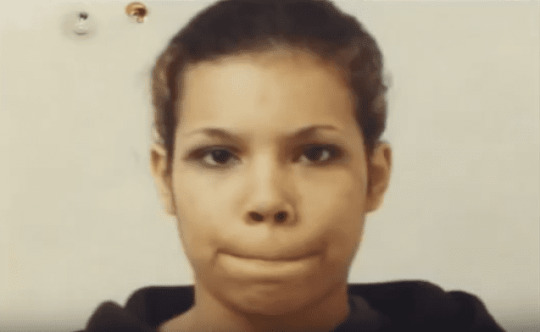
The man was identified as 37-year-old, Paul Michael Stephani. He grew up in Austin, Minnesota and moved to St. Paul in the 60’s. He had worked as a hospital janitor and a shipping clerk. He was not able to keep a job and blamed his epilepsy, which he apparently suffered from an older job. After losing his employment at Malberg, he returned to the area around the site full of anger. This is where he met Karen Potack. Stephani said, “When I picked her up, she had no jacket and I thought I’d take her for a cup of coffee. I just wanted to warm her up and I guess my mind snapped or something.” Stephani was arrested and charged with attempted second-degree assault and with the murder of Barbara Simons. There was not enough evidence to charge him to the other murders. During the trial of Simons’ muder case, Stephani's ex-wife, sister, and a woman who lived with him testified that they believed the hysterical caller revealing the attacks was Stephani. Those observations, alone, were not enough to identify Stephani as the Weepy-Voiced Killer since the hysterical crying distorted the voice. He was sentenced to 40 years in prison.
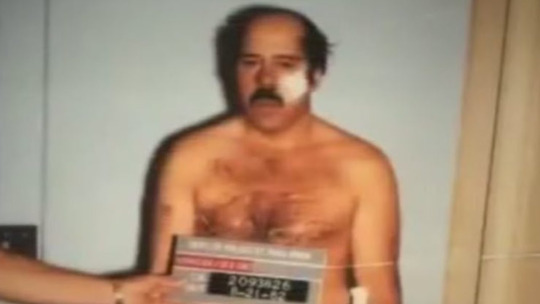
In 1997, years after his arrest, Paul Stephani confessed to the murder of Kim Compton after discovering he only had a year to live due to skin cancer. He also confessed to the murders of Barbara Simons and Kathleen Greening. Although he was charged in Simons murder, he had never outrightly confessed to it. He was also never a suspect in Kathleen’s killing, but he was able to provide intimate details of the murder that only the killer would know. Furthermore, they were able to find the name, “Paul S.” in Kathleen’s address book with Stephani’s number. He also confessed to the beating of Karen Potack in 1980.

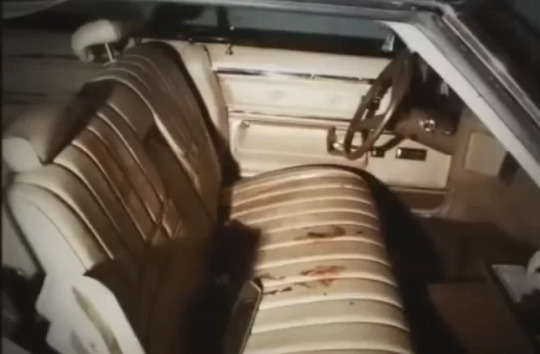
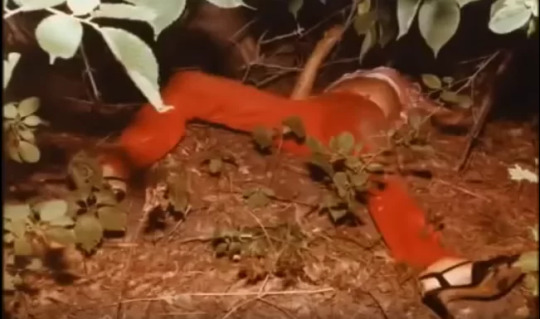
In 1998, Paul Stephani died at the Oak Parks Heights Maximum Security Prison.
911 Calls: https://www.youtube.com/watch?v=G9tZewM5LlE
105 notes
·
View notes
Text
The Many Lives of Lee Miller: Surrealist icon who photographed World War Two
If you were one of the few women photographers accredited by the U.S. Army at the start of World War II, chances were you were far from the front lines. Military regulations at the time dictated that female photojournalists, unlike their male counterparts, were not to enter combat zones.
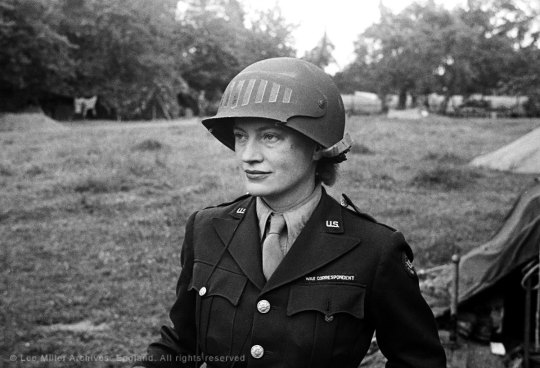
But Lee Miller, the Poughkeepsie-born photographer and noted Surrealist operating as British Vogue’s war correspondent, was not one to be constrained.
Miller had made a habit of not taking no for an answer long before she accompanied American forces to document scenes such as the Blitz; nurses operating hospitals after D-Day; women serving across the armed forces; and just-liberated concentration camps.

Elizabeth ‘Lee’ Miller was born on the 23 of April 1907 in Poughkeepsie, New York. She was the middle child of Florence and Theodore Miller, a mechanical engineer and avid amateur photographer. She was something of a tomboy, always ready for the next big adventure and to try the biggest stunt.
Her first coup was gracing the cover of U.S. Vogue in 1927 at age 19. Lee Miller was walking down a crowded street in Manhattan. She was ravishingly beautiful: blonde hair stylishly bobbed, lips painted red, her slim figure clad in the latest fashions from Paris.
Perhaps it was Paris she was thinking about so deeply. Whatever it was it absorbs her entirely that as she stepped off the sidewalk she didn’t see a car speeding towards her.
At the last minute a man whisked her to safety. He turns out to be none other than the publisher Condé Montrose Nast. As soon as he saw the woman he saved, he decided she must model for his magazine.
A few short months later, Lee Miller’s face, drawn by Georges Lepape with the New York skyline for a backdrop, stares out from the cover of Vogue.

That cover launched Lee Miller’s modelling career. Within months she became a fixture on the New York social scene, hobnobbing with the likes of Charlie Chaplin, George Gershwin and the Vanderbilts.
Fashion greats such as photographer Edward Steichen zipped her into Lanvin and Lelong, draped her in pearls, swathed her in velvet. In one picture she models a Chanel evening gown covered with geometric embellishments, her body resembling a glorious art-deco building.

Lee was fêted and pursued by suitors. A glassware manufacturer even moulded a champagne coupe in the shape of her breast. It was all very glamorous but, for Lee, not wholly satisfying. Later, remembering her New York years, she said, ‘I looked like an angel but I was a fiend inside.’
This contradiction – stemming from a traumatising childhood into early adulthood,
Her father, Theodore, was an amateur-photographer and had begun to photograph his naked daughter long before that, in 1914, when she was seven. According to Miller herself, in that year, she, then known as Elizabeth, had been sent to stay with family friends while her mother was in hospital.
During the trip, she had been raped by a sailor; the attack left her with gonorrhea. For the next year, the child was subjected to daily douches of potassium permanganate, and k twice-weekly visits to the hospital to have her cervix painted with picric acid. Everything she touched at home was immediately sterilised.

It was during this year that Theodore had begun to photograph his daughter in the nude, his first composition being a take on the French artist Paul Chabas' September Morn, a painting of a nubile girl bathing, which had caused a scandal when it was shown in New York in 1913.
For his own picture, Miller required his daughter to pose, nude but for slippers, in the deep Poughkeepsie snow: the resulting picture was called "December Morn". Theodore made it using a stereoscopic camera, so that, viewed through accompanying glasses, his naked child appeared three-dimensional.
The early childhood experience would plague her throughout her adult life, and arguably cause her to constantly try to reinvent herself, wondering if she ‘ever was meant to fit together’.

Those reinventions – as a key figure in the Surrealist movement, fashion photographer, muse and tormented war correspondent – have made her the subject of plays, film scripts (Nicole Kidman wanted to play her in a film written by David Hare that was never made).
Reinvention of otherworldly beauty was also so evident in all her photographs. But Lee wasn’t happy as a model. A sketch she drew in her journal in 1930 shows a woman standing against a studio backdrop, daggers pinning her into place, as another woman in a hat looks on. No wonder, then, that she was hungry to forge her own identity beyond the camera’s frame – a frame that, to a woman who had been looked at by men her entire life, represented an implicit power imbalance.

She gave up her modelling career and set sail for Paris, intending, as she provocatively stated, to ‘enter photography by the back end’.
Bags of confidence, together with letters of introduction from Edward Steichen, convinced Man Ray to take her on as his assistant. He was instantly enchanted and their professional relationship blossomed into a love affair so tumultuous that it affected them both for years afterwards.
Miller was to befriend other iconic Parisian artists like Max Ernst and Picasso and intellectuals like Jean Cocteau. She would vacation with some of the most prominent figures in the art world at the time. Picasso would paint Lee six times and the two remained friends throughout the rest their lives. Picasso wanted to bed her but she held her distance.
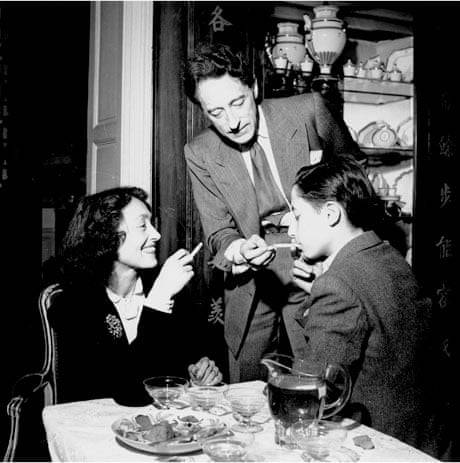
It was Lee Miller, not Man Ray, who discovered the photography technique known at "solarisation" bu turning on a light in their darkroom before the negatives had fully developed. It creates a dark line around the subject of the photograph and created groundbreaking images at the time. Ray is often credited with this discovery and he used it often in his own work, but it was actually Lee Miller who made the first picture of its kind on accident.
Man Ray’s portraits of Lee are sensuous and romantic, but even he never seemed able to see her as a whole, often depicting her body broken up into pieces.
He painted her lips floating disembodied in a mackerel sky in ‘Observatory Time: The Lovers’, and in his photographs her breasts, neck and eyes are removed from their context, palpably humming with sexual energy, the ultimate surrealist objects.
In December 1930, Miller's father, Theodore, had come to Paris from Poughkeepsie, New York, to see his daughter. Like any good parent might, he had taken pictures of her. Unlike most fathers, these photographs were shot in the nude, in the bathtub of their shared hotel suite. Lee Miller was 23.
The shots Man Ray took of Lee and Theodore Miller, she in a demure print frock and curled, child-like, in her father's lap, are deeply weird. They seem less of a father and daughter than of an older man and his much younger lover.
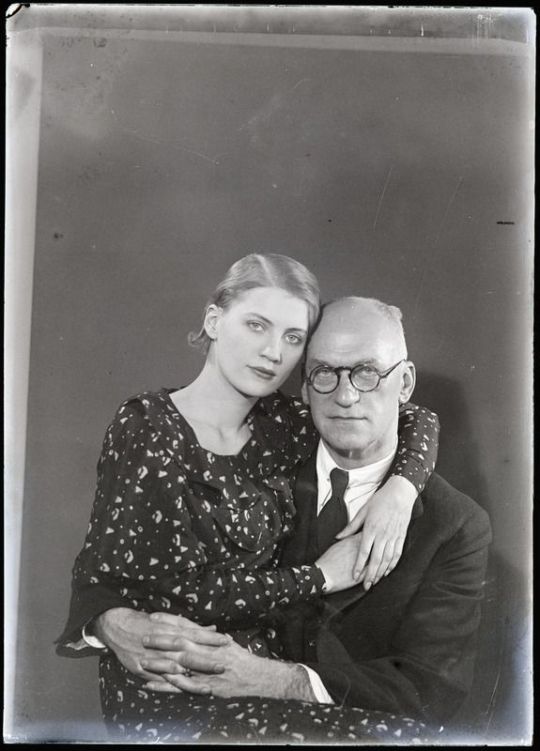
Perhaps Ray had heard rumours that Theodore had been Lee's actual childhood abuser, or he may have imagined it for himself. (No charges were ever brought against the unidentified sailor-rapist.)
In terms of age, Ray's own relationship with Lee was also ambiguously paternal: he was 17 years older than her, a pattern that would mark all her relationships with men. At any rate, Theodore and Ray seem to have gotten along famously. Together, the two men photographed Lee, nude, lolling on a bed with three other naked women.

It is hard not to see all this in psychological terms, if not in moral ones. Cursed with a perfect beauty, Miller became a focus of Ray’s internal need to violate. For Man Ray, this was aggravated by the masculine drive to compete.
If the countless celebrities photographed by Man Ray – Wallis Simpson, Aldous Huxley, Virginia Woolf, Picasso, Chanel, Schiaparelli, himself – the one he went back to most obsessively was Lee Miller. You can see why. Miller was a physical ideal, the kind of perfectly moulded, ice-blonde beauty beloved of Hitchcock; flawless, or at least imaginably so.
Lee Miller and Man Ray's exciting, passionate and tumultuous relationship ended and Man Ray did not take it well. In fact, one of his most famous pieces, Indestructible Object, includes her eye ticking on a metronome.
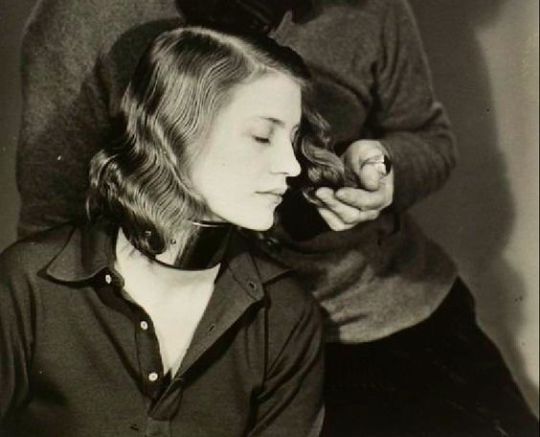
Ray's instructions to fans on how to make their own version of the work suggest the violence of his anatomical method. "Cut out the eye from a photograph of one who has been loved but is seen no more," he writes, bitterly. "Attach the eye to the pendulum of a metronome and regulate the weight to suit the tempo desired. Keep going to the limit of endurance. With a hammer well-aimed, try to destroy the whole at a single blow."

That done, the photographer, ever the drama queen, sat for a self-portrait called "Suicide" with a noose around his neck and a gun pointed at his head.
Hell hath no fury like a Surrealist scorned.

When their affair ended, Lee moved back to New York and opened her own studio, where she worked ‘in the style of Man Ray’, as she advertised in a bold appropriation of his name.
She hardly needed the help. Clients such as Saks Fifth Avenue and Elizabeth Arden paid handsomely for pictures by the woman who was herself ‘one of the most photographed girls in Manhattan’.
But in just a few years the Lee Miller Studio closed when Lee married an Egyptian, Aziz Eloui Bey, and moved with him to Cairo. She felt stunted by Egypt’s restrictive society but produced some of her best work there, driving into the desert with her trusty cocktail kit in the boot to take photographs of the landscape.
Her husband, however, let Lee spend extended holidays in Europe with the Surrealist set, where she met painter and art collector Roland Penrose, the man who eventually became her second husband. They would be happily married for the rest of their lives until death. She at last found someone who accepted her whole. But it still wouldn’t be enough for Lee.

By 1939, it was time for another reinvention. War broke out, the Blitz rained down on London, and Lee, urged on by her friend, the photojournalist, collaborator and sometime lover David Scherman, got accredited as a war correspondent for (of all places) British Vogue.
Her editor, Audrey Withers, expected soft-focus photo-essays about war privation, but Lee had other ideas.
Her reportage was gruesome, intimate and important. On the front lines at the siege of Saint-Malo, Lee documented the Americans’ first use of napalm and described a company ready for action, ‘grenades hanging on their lapels like Cartier clips, menacing bunches of death.’

She shot close-ups of the faces of German Nazis who had committed suicide in Leipzig and took powerful portraits of starving prisoners following the liberation of Dachau and Buchenwald.
When she arrived in Paris during the Liberation the first thing she did was go to Picasso's studio. There they are pictured smiling holding each other tight, probably beyond relieved that they were both alive. Picasso is quoted saying in astonishment "the first Allied soldier I should see is a woman- and she is you."

When Hitler fled Munich at the end of the war, Lee and Scherman were the first of the press corps to reach his apartment, where they drank his cognac and napped in his bed. They propped a picture of Hitler on the rim of his bathtub, set Lee’s dirty combat boots on the bathroom rug and took the now-famous photograph of her bathing in Hitler’s tub.
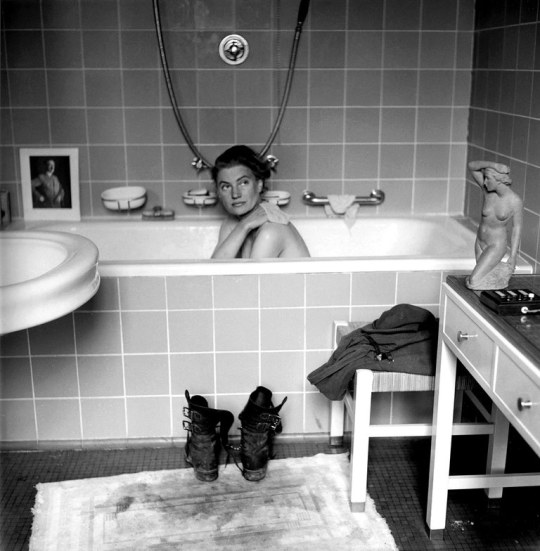
The war made Lee feel alive.
The image of Miller in Hitler’s tub was the one that led to the end of her Vogue career. The public was outraged at what they interpreted as flippant disregard for the ravages of war. Being accused of insensitivity inevitably took its toll, but it was what she saw, felt, and experienced during those years that would eventually send her into a struggle with depression.
She loved her uniform, tailored on Savile Row. She loved roughing it: washing in her helmet and subsisting on K-rations. And for a woman always searching for meaning in her life, documenting the war for readers back home gave her purpose. ‘Believe this,’ she cabled to Vogue, and the pictures she sent back were indeed horrifying. They came at a cost: Lee was never able to distance herself from her subject. She threw her entire self into her work.
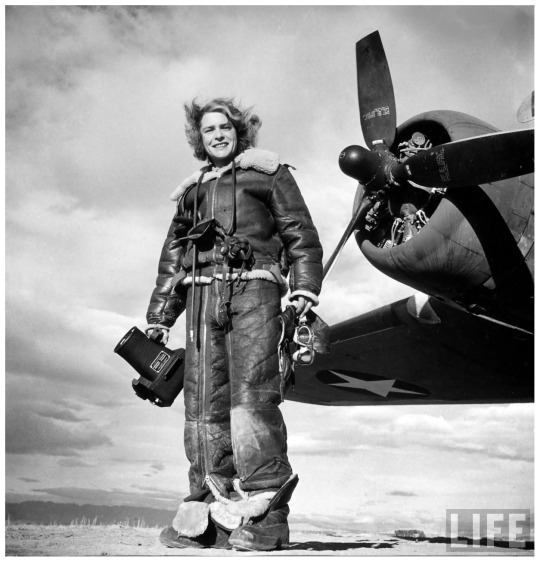
Lee suffered mightily postwar.
The trauma of what she had seen haunted her for the rest of her life. Today we would call it PTSD. In postwar England, Lee was told by her doctor ‘we cannot keep the world permanently at war just to provide you with excitement’.
On her return to London after the war, she was feted. "Who else has written equally well about GIs and Picasso?" her editor said. "Who else can swing from the Siegfried line one week to the new hip line the next?"

Desperate to ward off a sense of anticlimax, she returned to eastern Europe. But soon she was pregnant at 40 years old and finding the prospect of motherhood scarier than any front line.
She missed the action, despite suffering post-traumatic stress. She also felt increasingly sidelined: in staid, patriarchal postwar Britain, her husband was the one in demand.

Finding the inspiration to write and take photographs became harder and eventually she gave it up entirely, hiding more than 60,000 negatives and contact sheets in the attic and becoming so tight-lipped on the subject that even her own son, Antony, knew nothing about her war work until he was an adult. An entire piece of herself was boxed up and placed out of sight.
Depressed at her loss of looks and gain in weight, she found solace in drink and cooking elaborate gourmet meals for her guests at Farley Farm House in East Sussex, her home until her death in 1977.
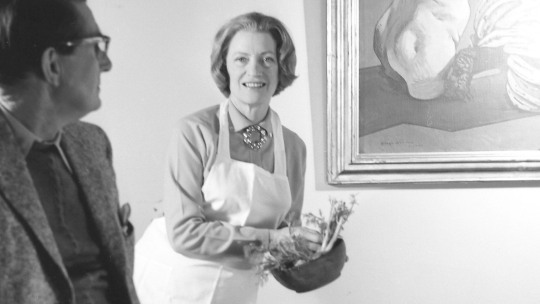
She could have written a very good cookbook by all accounts. She was a virtuoso chef.
She remained friends with the Paris crowd. In particular she was close to Picasso. Lee Miller's son recalls going over to Picasso's home as a child. He even wrote a book about the time he bit Picasso, as a child, called ‘The Boy Who Bit Picasso’.
Lee even reconciled with Man Ray. Lee and Man Ray last met in London in 1975, at Man Ray's retrospective at the Institute of Contemporary Arts. By now, he was in a wheelchair and Lee Miller was a drunk.

Lee Miller died of cancer in 1977. By the end she was overweight, an alcoholic, ravaged by depression, and tortured by her husband’s affair with a trapeze artist. Anyone meeting Lee Miller then would have been surprised to know that she was once considered the most beautiful woman in the world, second only to Greta Garbo.
But just as she, and her reputation, went out of sight for years. There has in recent years been a resurgence of interest in Lee’s photography, bringing her legacy, and her enduring appeal, further into the light.
As a female icon she never saw herself as a victim. It's remarkable that Miller was able to delight in her body (and in the pleasure others took from it). She saw sex and love as two very different beasts. She was very comfortable living out the truth as she believed it."Emotionally, I need to be completely absorbed in some work or in a man I love," she wrote, but she didn't see why going to bed with someone should upset whichever man she was currently in love with.
Lee insisted that she couldn’t be kept and that women should be able to be as sexually free as men. She was radical, and people made her suffer for it - Man Ray included.
Strikingly beautiful, she was used to submitting to the male gaze and even subverting it. A less spirited woman might have been crushed by these alpha males, but Miller, unfazed, determinedly transformed herself from passive model to active artist.

Her son, Antony Penrose, observed in his 1998 biography of his mother, The Legendary Lee Miller: Photographer, 1907–1977, her unique background capturing uncanny moments and haunting, bizarre portraits during the heyday of the Surrealist movement served her well in war photography. Penrose wrote:
“Unexpectedly, among the reportage, the mud, the bullets, we find photographs where the unreality of war assumes an almost lyrical beauty....On reflection I realise that the only meaningful training of a war correspondent is to first be a Surrealist—then nothing in life is too unusual.”
But it was the very nature of unconventionality of her career trajectory that hampered her historical reputation.
Her early association with the Paris Surrealists - particularly her role as Man Ray's "perversely enchanting muse" - overshadowed her own artistic accomplishments.
Her abandonment of photography, and the consignment of all her work to her own attic also limited her impact during her lifetime.
Her association with fashion also coloured the interpretation of Miller's work. As her biographer Carolyn Burke states, "to this day, her life inspires features in the same glossy magazines for which she posed...this approach turns the real woman in to a screen onto which beholders project their fantasies", and further perpetuates the legend of Lee Miller as an "American free spirit wrapped in the body of a Greek goddess".
The force of her beauty, effervescent personality and high octane biography will always remain central to interpreting her work.
Today Miller has been recognised as among the most original and ambitious photographic artists of the 20th century, and a subtly transgressive artist, who - as Lynn Hilditch asserts in Lee Miller, Photography, Surrealism and the Second World War - took off from her Surrealist background and "pushed the boundaries both of art and war photography, often using unconventional methods to comment on such multifaceted issues as sex, gender, death, and war"
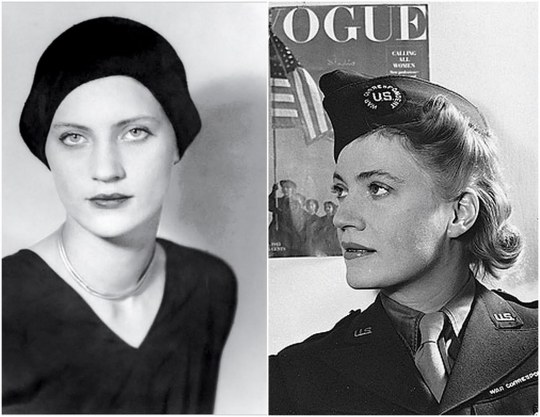
200 notes
·
View notes
Text
My Journey to Lexington and Return to Aotearoa
On Monday the 20th of July NZ time at 11:30 my sister went missing. Her fiancee told me she was seen on security footage getting out of their car and walking away. She was found by Lexington, Kentucky police 4 hours later, extremely dehydrated and distressed. She had a mental health incident. I won’t go into this further to protect her privacy.
I flew over to be with her, leaving on the 29th of August when it was obvious to us that she needed support as did her fiancée who was struggling on his own with worry and looking after himself also. As the youngest family member who has dual citizenship and earns the least as well as being her sister able to provide intimate care, I was elected to go and help.
My flights over took two days, I stayed a night in LA. In the parts of the US I visited there was absolutely no quarantining. As a citizen, I was not even subjected to a health screening.
Once I got to Lexington it was much easier to reach my sister while she was in the hospital and we made our best effort to call her twice a day. She told us this was extremely helpful for her path to getting better. By the time she left, she was very bored as she is extremely intelligent. She was quite anxious and unable to focus on reading, as well as not being allowed anything to write with except crayons and couldn’t get ideas out of her head.
On the 6th of August she was able to come home and it was so good to hug her. We spent the next three weeks talking, drawing, making food, playing video and board games, going for walks, playing with one-year-old Sochi and the cats.
I was able to work remotely the whole time and I am extremely thankful to my work for being so accommodating.
I had never been to Kentucky before. Going outside was quite strange, and I mostly tried to avoid it except for exercise, groceries and essential items. People sat at tables outdoors, none wearing masks. We mostly tried to do our groceries via pickup, which worked out well. Lexington is very similar to Auckland in that is hot, humid, flat, spread out and full of people obsessed with their cars.
Something I never had seen before in New Zealand was motorcyclists with no helmets and no leathers, I assume it would be an infringement on their rights to not be brutally be killed in an accident.
There were many signs for personal injury attorneys, Jesus and the military. One Baptist Church had a sign saying “NO ITS NOT HOT AS HELL”.
I enjoyed the myriad of inexpensive vegan snacks such as cheddar flavoured chickpea puffs and cream cheese alternative.
Lexington has a huge history of horse racing and many of the streets were named after famous horses such as “Man o’ War Boulevard.” I also enjoyed Versailles Road which is pronounced by the locals as Ver-Sails. My sister’s home is across from Red Mile, a giant horse racing track and casino. They way they circumvent the gambling laws is by only having slot machines that have tiny horse races from years ago that you are betting on.
The tension about the election was palpable in the friends of my brother-in-law and the household itself. Many people are terrified for November and the farce of a democracy the United States has become. With the USPS being de-funded, mail boxes being removed, prisoners not allowed to vote who were convicted for non-violent drug offenses and protesters in Portland being snatched of the street in unmarked vans by unidentified people in SWAT gear, it is a fascist state.
I am an American, I was born in Colorado, I have family that I love that are not what we hear on the news here on this little island in The Pacific. The loud conspiracy theorists are a vocal few, and we need to remember as people of Aotearoa that they exist here too. I will never forget the faces of the 5G conspiracy theorist protesters as we walked down the main street protesting in support of the Black Lives Matter movement. We are not above Americans. I am proud to be a citizen of both countries while recognizing the flaws of both nations.
Please vote.
My return journey home was painless other than accidentally spending $40 US on a half bottle of wine at LAX. I now know fancy wines are a racket because it tasted the same as any other chardonnay to me.
Other than having my temperature taken and asked about any Covid symptoms I might have, my entry into New Zealand was the same as always. It really helps to be a citizen of the place you are traveling to.
Once we had processed through customs I was led to a bus that took us to The Pullman Auckland, a 4.4 star hotel on Princes Street. There were about a dozen or so of us on the bus and our luggage was loaded and unloaded for us by people in full personal protective equipment. We were explained what the process would then be by a Ministry of Health representative and a member of the Air Force. We were checked in at one desk, asked why we traveled and where we would be staying at another. The third desk was an explanation of the hotel facilities and procedures. The fourth desk was a health interview with a nurse. I filled out a meal request form while I waited. I notified them that I do not consume animals or things that come out of them. Absolutely everyone was extremely kind and efficient.
I then went to my room on the tenth floor which has a beautiful view of Albert Park and I can see the Sky Tower to the right. Around 8:30am they brought me a lovely vegan breakfast of bacon and eggs. A couple hours later I noticed the yogurt they had brought said “VEGAN YOGHURT” on the bag. I ate it very happily! There is no fridge or microwave.
I joined my work team meeting and tried to work but the internet is really bad to connect remotely to our servers on. I fell asleep at 3pm and woke up at 3am. I have watched a lot of Star Trek: the Next Generation.
I tried out another eye makeup with the new supplies I got in Kentucky. I went to the exercise facilities on the ground floor, saw all the people walking in circles, panicked and returned to my room to do laps, burpees and sit-ups. The Covid tummy is out in full force and I hope to get back to my regular exercise.
I spoke to my sister, mother and some of my best friends Jasmin, Maya and Lewis. I had my temperature taken again by a nurse and I am normal. Now I am here writing this and eating a lunch of tofu and spinach.
I will spend the next to weeks trying to work as I can, making art, playing games, speaking to the people I love and thinking about my plans for the future. I hope to pursue further education on Community Partnerships with a focus in local government. I loved my time on Youth Council and hope to be a voice in decision-making to represent unheard and marginalized voices. I want to be there for queer people, youth, takatāpui, multicultural communities, women and a voice for the arts. I am hoping to achieve a Certificate in Social and Community Leadership through the University of Auckland next year, where I have been offered a place. I now have to think about how I’m going to make that happen with in-person classes whether I will move to be near Epsom or fly up for my classes once a week.
Arohanui and Ngā mihi,
Samantha
1 note
·
View note
Text
Fatal Crash on Tata-Chaibasa Highway Claims One Life
Motorcycle collision with passenger bus leads to road blockade by locals A tragic accident on the Tata-Chaibasa highway resulted in one death and one severe injury, prompting local protests. CHAIBASA – A fatal collision between a motorcycle and a passenger bus on the Tata-Chaibasa highway near Kuju culvert has left one youth dead and another seriously injured. The incident occurred when the…
#राज्य#Barbil Odisha residents#fatal motorcycle crash#Jamshedpur bus accident#Kuju culvert collision#Mufassil police response#Odisha youths accident#road blockade protest#Sadar Hospital emergency#state#Tata-Chaibasa highway accident#unidentified accident victims
0 notes
Text
Tsunami (Roger Taylor x Reader)
(a/n: Okay so this isn’t the deep grungy angst slowburn fic I talked about, but it is coming, I promise. But hopefully this angsty oneshot will hold ya over while I’m figuring the other thing out. Thank you so much @fluffyunicornofdanger for helping me edit this bc I’m stubborn and like to pretend I don’t need to edit hahaha and thank you for the encouragement to get back out there and write, I really mean it, you mean a lot to me. Okay on with the fic!)
Warnings: Angst, Fluff, Car Accidents.
Word count: 3.5k
Rain in London wasn’t exactly something to be surprised about. In fact, people were more surprised when they saw the sun. Overcast days and rain was one thing, but what seemed to be a damn tsunami was a whole other battle. One no one was prepared for.
Of course, rain had never stopped anyone in the city from doing anything, or else nothing would get done, but not even the weather forecast on Y/n’s tellie predicted what could happen on the short drive home from the grocery store.
The girl gripped the steering wheel with white knuckles, getting frustrated with the harsh precipitation and the effect it was having on all the other drivers. All she had wanted was to get home and have a hot cup of tea with her boyfriend. That was all she was asking for.
“This is bollocks. You know some of us have places to be!” The woman slammed her hand down on the horn. Who had taught these people to drive? Mad Max?
Each car was either speeding and weaving around the other vehicles or they were sitting completely still, nearly parked in the middle of the street. This was not a go cart rink nor a parking lot. And y/n was not having it. It was just a little storm, not the apocalypse. So, she decided to become one with the other speed demons, stepping on the gas pedal way harder than she could recall ever doing.
Her new driving technique seemed to be working just great, as she made excellent progress, getting closer and closer to the warmth of her home. She ignored all the horns that were being honked at her, she just needed to see Roger. Well, to be honest she needed to see anything.
The speed of her driving, mixed with the weather and the rubbish windshield wipers on her tiny but mighty car allowed her to see very little. As soon as the rubber wipers would get rid of the water buildup, more would pile on. It was like a waterfall was running down her windshield.
Y/n began to get distracted by sensory overload. The honking, the rain that sounded like bullets on the metal top of her car, the straining of her eyes, and all the other cars racing through, she couldn’t quite see the traffic light in front of her.
The storm had reached its peak and the wind was roaring. The shit wipers that helped her see just a tiny bit had given up the battle against mother nature and stopped completely, so the girl was sitting at this traffic light, heart pounding from the inability to see anything.
Just one stretch away from reaching her shared flat with her boyfriend snuggly inside, she had actually believed she was two blocks away.
Everything she was doing was going off of instinct. She knew the streets of London like the back of her hand but when you don’t even know where you are and are blinded by harsh lights and noises, you get a bit disoriented. So, believing she was at the light two blocks away, instead of just one, she counted down the exact seconds for how long that specific light took to turn green and when she got to one, she floored it. Pedal to the metal.
What she thought was just a flash of lightning from the storm hit her, she sighed the tiniest bit of relief, from believing she had made it across the proper street, but that went away and turned to a gasp that burned her lungs as she heard the loudest and longest honk she had heard all evening, and suddenly, her vehicle was flipped on its side 4 times, hurling the girl and the car into somebody’s front yard.
Everything seemed to go in slow motion, yet in super speed at the same time. She felt an unbearable pain in her right side and then her head smashed into her driver side window, her skull bouncing back and then falling forward to hit her steering wheel. Hard.
Screaming and honking ensued. A man wearing a baseball cap rushed out of his double-decker bus, which had taken little to no damage. But he wasn’t worried about his bus, “She came out of nowhere! I-I was just driving forward an-and then she… she-”
He had a look of horror on his face, as well as everyone else in the area. People stopped driving and stepped out of their cars, completely frozen at the sight of the wreckage. The owner of the house she had crashed into ran outside as did everyone else living on the street. When an accident happens in a neighborhood in the city of London, everyone was a rubbernecker.
“What are we all doing staring?! One of you, call a bloody ambulance!” Someone from a car shouted.
Many of the homeowners ran inside to dial 999, but some were still frozen in fear. That saying about how you can’t take your eyes off of a car wreck? It was proving itself to be true.
---
Roger had been asleep when the crash had happened, but the sound of a car tumbling, screaming, and then the blaring sirens of an ambulance in his neighborhood surely woke him up.
As everyone had been already doing, Roger joined in on the bandwagon and stood on the front porch of his and his girlfriend’s flat, to stay out of the rain.
He couldn’t quite make out what the car or the driver had gone through since the ambulance was blocking his view of anything but judging from the faces of people who were watching from the street and the fact that the police had the whole bloody road blocked off, it had to be bad.
He quietly watched with a curious eye as the unidentifiable person was hiked up into the ambulance on a gurney, they had a breathing mask over the person’s face. Thoughts of his girlfriend crossed his mind, as a couple hours had gone by since she had left for the store, but since the road was blocked off, she probably had to take some back roads and would be there any minute. He wouldn’t want her to have to see something like this anyways, it was petrifying.
The EMTs made quick work of slamming the truck doors after hopping inside, and the vehicle was speeding away in no time towards the nearest hospital.
Now Roger could kind of make out the damage that had been done to the car. It was flipped over, resting completely upside down. And… though he certainly didn’t have anything close to the best eyesight ever… he knew that car. And when he saw how bashed in the drivers side door was and the fact that the bloody thing was UPSIDE DOWN, his heart sank. Lower than humanly possible. His heart was probably 6 feet under.
No shoes, no socks, no shirt, only boxers on, Roger ran from his front porch, down the street, in the pouring rain, hoping, just hoping that somehow his eyes had been mistaken.
They weren’t. The license plate was that of his girlfriend of 4 years, Y/n.
Roger liked to keep up appearances. He liked to be known in the media as a rough, grungy, don’t take him home to mama kind of guy, but he didn’t care. He physically and mentally couldn’t care. He looked at all the damage to the car and fell to his knees, letting out a choked sob. How could she bounce back from this? How could she even survive this?
He was knelt down right next to the upside down driver side of the car, his hands reaching inside, shakily to grab at the Polaroid of the two of them that he knew was tucked inside the sun visor. One look, and he was putty. She was in god knows what physical condition on her way to probably ICU, by the looks of the car, and all he could do was look at this photograph and cry.
“Sir, we’re gonna need for you to stand up and step awa-” A police officer tapped on his shoulder but immediately had his hand swatted away by the blond on the ground.
“I’ll bloody hell get up and step away when I want,” Roger gritted his teeth, not looking at the officer, probably not even realizing it was an officer because all he could do was look back and forth between the picture and the car.
“Sir, I’m going to ask you one more time, nicely. We need to take this car to the pound.”
The officer was then met with a red face, red eyed Roger, photo in hand, “Do you see this? Do you know who that is? That’s my girlfriend and this is her car,” he gestured at the girl in the photo and then to the hunk of metal that was once called a car, “and I live FOUR doors down and I didn’t find out about this until just now.”
The police officer may have been taller than Roger, but in that moment, Roger was about as unstable and explosive as an atom bomb. To be quite honest, the large policeman was a bit intimidated by him, understandably so, “I-I’m sorry, sir-”
“Just tell me where they’ve taken her,” Roger tried to tough it out and stop crying but it was no use, “Which hospital?”
The now, very sorry man, barely had time to utter the name of the hospital to the sobbing mess before Roger rushed back to his flat, put on a pair of pants and a coat, slipped on a pair of shoes and lunged his way into his car, driving like a mad man to get to the hospital.
---
“Hello? Miss? Can you hear me?”
“She’s got lacerations on her head and torso, appears to be concussed, doctor.”
“Some sort of leg fracture, I can’t be sure.”
“Dark bruising on her head, can we get a little help here? I need a monitor, can someone please get me a heart monitor?”
All of these voices danced in and out of Y/n’s head, not quite sure if they were coming from just one person, or twenty.
She had no idea where she was, all she knew was that her head felt funny and her whole body stung and ached. She could just barely open her left eye as the other was nearly swollen completely shut.
“Doctor, she’s awake,” A nurse pointed out, frantically. Everything seemed frantic, “Miss, do you know your name or where you are?”
Y/n couldn’t speak. Her throat was dry and hoarse and she really didn’t know where she was or what had happened. She was in too much shock, physically, and overloaded, mentally to speak. All she could do was try to look around with her one good eye, but everything was so bright and blurry.
“We’re going to get you into a room for a physical examination before we take you back for surgery, alright?”
Surgery? Had Y/n heard this woman correctly? Her ears may have been ringing but she knew she heard the word surgery and Y/n certainly didn’t need surgery. She fought the pain with everything she could and tried to sit up, “No… no…” Only to be pushed down by the same nurse.
“Ma’am, your injuries are intense, please don’t move, it’ll only make things worse. Let us get you to a room.”
Y/n felt the sharpest of pains in her head from her little fit, realizing that the nurse was right, she gave in and laid back down, an electric shock feeling going from her right shoulder, down to her toes, “Fucking hell,” she mumbled in her hoarse voice.
The girl did her best to stay awake, although the sweet embrace of sleep was calling to her constantly.
---
Roger arrived at the hospital looking like a hot mess. Sprinting up to the front desk, with very little breath left from running there from his car, which conveniently was parked at the back of the lot, due to a full parking deck. “I need to see my girlfriend,” he panted out, “car accident, just about 20 minutes ago.”
The receptionist looked at him a bit funny, seeing as he was soaking wet, wearing pajama pants, a leather jacket with no shirt underneath, and two completely different shoes, but searched the database anyways, “Name?”
“H-her name is Y/n L/n. Look, it’s very recent, she probably was just rushed through here-” He got cut off, making him more agitated, if that was even possible.
“She is in an isolated room right now being examined, you can sit in the waiting room until she can have visitors.”
Roger didn’t like that answer. He didn’t like it one bit. You could practically see the gears in his brain turning and then lighting on fire. His ocean blue eyes rolled at the woman, “And when exactly would that be?”
“Sir, I don’t have that information yet, but I will let you know as soon as I do,” She tried to reason with him. It’s not like he’s the first loved one to freak out, she dealt with it all the time, but something told her that this might just be a new experience for her.
---
“Motherfucker!” Y/n screamed out as she was being poked and prodded by the doctor. He was only doing his job, finding out what exactly was going on inside her body. It seemed her head and her right arm had taken the hardest blows.
“This is going to hurt, I’m sorry,” He whispered as he grabbed her right arm and tried to bend it at the elbow, which only resulted in another yelp of pain, “Could you bend it on your own?”
She was definitely fully conscious now, only because of the painful, necessary, yet painful testing she was going through, “If you couldn’t bend it for me, what makes you think I can do it on my own?” She mumbled, her face scrunched up from all the pain.
The doctor chuckled at her mental vigor, “You may be concussed but you’ve got a lot of fight in you,” He then turned to a nurse, “I’m thinking we might need to do multiple x-rays.”
---
“Okay but could you at least go and check?” Roger asked the receptionist for probably the 50th time, and to say it was getting on her nerves would be putting it lightly.
She got up from her swivel chair and waved the blond man off, dismissively and clearly irritated, and walked into some hidden room, leaving Roger to sit down with his own thoughts in the waiting area.
His anger had been fueling all of this but it hadn’t hit him since his breakdown at the crash site that he was, in fact, sitting in a hospital, waiting to find out if his girlfriend was even alive. Never in a million years would he think that this could happen, and he was pretty sure that he wasn’t alone on that thought. Nobody ever thinks that something so traumatic could happen to you or someone you care about but once it does happen… it gets real.
Roger had been thinking about everything and nothing at the same time for some time now, when the woman he was about to go into fist to fist combat with returned with a hand on his shoulder, “Room 317. I’ve been informed to warn you, though, it’s not great. But she is okay.”
His head shot up and without even thinking, or thanking the woman for that matter, he walked to the elevator. He pressed the button to go up with a blank expression on his face.
What was he supposed to feel? Sure, she’s alive, but what had “it’s not great” meant? Should he feel happy? Relieved? Or devastated?
Much like the accident itself, everything was in slow motion for him. The elevator just couldn’t move fast enough. But once it had and the doors opened, he was on a mission. Roger didn’t care if she had lost all her limbs, he had to see her. He had finally found someone he could call the love of his life and she was laying in a hospital bed alone, and he would not be having any of that.
“314,” He counted out loud, heart racing as he walked, “315, 316…” He slowed down, seeing the door was already open, just cracked slightly. His nerves were making him shake uncontrollably but he grabbed the Polaroid from the car, out of his pocket and gripped it tight, in hopes that it would give him some sort of ungodly strength, “317.”
Roger grasped the door knob and knocked on the door with the other, except there was no point to the knock, seeing as he was already entering. “Y/n?” He whispered quietly.
He heard sort of a moan in return that made his knees buckle, it wasn’t the type of moan he liked to hear from her, quite the opposite. A moan of pain that he had never heard come from her in his entire 4 years of knowing the girl.
Roger slowly walked into the room, as not to scare his girlfriend, but in reality, he was probably trying not to scare himself from whatever he was going to find behind that curtain. That fucking curtain. He pulled it back slowly, finding Y/n with bruises all over, some minor cuts on her body, but one large one on her forehead, her right eye was swollen to hell, and the doctors had put her right arm in a temporary soft cast and a sling. Hair frizzy and scattered across the pillow, but she still looked like herself. Roger let out a sigh of relief. That breath had probably been held up inside of him from the moment he was in the elevator.
“Rog?” Her voice was raspy and quiet but he heard her and rushed to her side.
“Yes, love? Are you okay? Do you need anything? A pillow? Some water-” His frantic nature was justifiable, considering the night they had both had, but she seemed to have another concern.
Y/n tilted her head to the side to look at him, still only able to see with her left eye, “I think the ice cream from the store will have melted by the time we get home.”
Roger let out a relieved chuckle, “We can always get more ice cream, my sweet. All I care about is that you’re okay.” He didn’t want to move her arm to touch her so he leaned down and kissed her hand, which made her frown a tad.
“You can touch me, Rog, I’m not made of paper,” A twinge of sadness could be heard in her voice, “plus they’ve given me some A grade drugs so I feel a bit better.” She tried to giggle but ended up coughing in the end.
Albeit nervous, he grabbed her left hand and kissed her knuckles, then various kisses up her unbroken arm, and lastly he landed a kiss straight on her lips. A chaste kiss, but a sweet one, nonetheless, “I thought I was going to lose you,” he hovered above her lips, taking in the features of her face, the right side was far more beaten up than the left, but he could still see her underneath it all. For better or for worse, right? Or was that only with marriage? Not that he didn’t see it in their future, but in a hospital room after a car crash wasn’t exactly the romantic proposal he imagined.
“It’s gonna take a lot more than a double-decker bus to kill me off, Taylor.”
They both laughed a much, much needed laugh. “I love you, you know that?” He had been brushing all of her y/h/c locks to the side, making her look more like herself and less like someone who had been struck by lightning.
Y/n hummed in response and leaned into his hand, “How on earth are we going to deal with this shit?” She would have gestured down to her broken body if she could’ve but instead she just looked downwards at herself.
He shushed her and continued petting her hair, lovingly, “Don’t worry about that, love, we’ll manage, I promise,” He was acting stronger than before but he couldn’t help it if a tear or two fell from his eyes, “I’m going to take care of you, okay? We’ll get a new car, I’ll help you bathe, it’ll be fine, you just need to focus on feeling better and healing.”
The girl nodded groggily and smiled faintly, “Okay. But make sure you get some more ice cream, it was quite expensive.”
He realized the drugs were kicking in and making her sleepy so he just smiled to himself and snuggled into her neck, “I’ll get you all the ice cream you want.”
He stayed like that for a while, by her side, letting her rest, but all that aside, once she was better, he was never going to let her live this drugged up ice cream fiasco down.
#Queen#bohemian rhapsody#roger taylor#roger taylor x reader#roger taylor imagine#roger taylor fanfiction#roger taylor fanfic#freddie mercury#brian may#john deacon#joe mazello#ben hardy#ben hardy fanfic#rami malek#gwilym lee#brian may x reader#john deacon x reader#joe mazello x reader#ben hardy x reader#gwilym lee x reader#rami malek x reader#queen imagines#queen fanfic#borhap#borhap imagines#borhap fanfic#queen x reader#bohemian rhapsody movie
212 notes
·
View notes
Photo



Somerton Beach Man
It all began on 1 December, 1948, when the body of an unknown man was found, resting against a sea wall, at Somerton Beach, Adelaide.
An autopsy showed that deceased had been very fit, with broad shoulders, muscular legs and healthy organs.
He had no identification on him, but in his pockets were found an unused second-class rail ticket from the city to a nearby beach, an Army Club cigarette packet (containing a different brand of cigarettes – which in itself is unusual), a used bus ticket from the city center, a narrow aluminum American comb, a quarter-full box of Bryant & May matches, a hanky and half a packet of Juicy Fruit chewing gum.
He was dressed very fashionably for the time, wearing a singlet and jockey shorts, a white shirt with a narrow, red, white and blue tie, a brown knitted jumper, a brown double-breasted suit coat, socks and highly polished brown shoes. Which was all very well and good, but totally inappropriate for the weather. He was dressed for mid-winter, when in fact, it was the middle of summer.
The investigation into who this man might be then began in earnest. It was reported that a man, fitting the same description, was seen at the beach, in the same place where he was later found dead, the previous night. He was ignored as people thought he was drunk. At one time somebody saw him lift his arm before dropping it. No trace of alcohol or poison was found in his blood.
In attempting to identify the body, the two newspapers in Adelaide posted a photograph of him. That’s when 251 people came out of the woodwork, and claimed to know who he was. Every single lead was squashed by trivialities, such as that he couldn’t possibly be the woodcutter “Mr Walsh” as it was abundantly clear by the state of his hands that he had not cut wood in at least eighteen months. The only real, good clue they had to his identity was the expensive clothing he wore.
Police thought a breakthrough had occurred when the Adelaide Railway station found a suitcase in the station cloakroom. It had been checked in after 11am on 30 November and was assumed to have belonged to the dead man. It contained many things of interest, including clothing, shaving kits, a screwdriver, an American comb and a stenciling brush - among others.
All identifying marks, such as brand tags etc had been removed from the clothing. Well, all except “T. Keane” which was found on a tie. There was also “Keane” mentioned on a laundry bag, and “Kean” on a singlet. It is believed that whoever removed the tags did so purposefully and left the “Keane” tags on, knowing full well that the dead mans name was NOT Keane… yes, quite sordid.
The most intriguing thing of all is what was found in a small, fob pocket of the dead man. It is this which has had code breakers around the world stumped for the past 65 years. On this paper were printed the words “Taman Shud”. Expert translators were called in, and it was found that the words “Taman Shud” is a phrase meaning “ended” or “finished”, and found on the last page of the “The Rubaiyat of Omar Khayyam”.
In a bizarre twist, a week before the inquest, a man who wished to remain anonymous came forward to advise he had found a copy of the first edition of the book “The Rubaiyat of Omar Khayyam” in the back seat of his unlocked car. At the time, his car had been parked in Jetty Road Glenelg, about a week or two before the body was found. Tests authenticated that the paper had been removed from this copy of the book.
There was also some handwritten text on the back of the book. This text is now referred to as ‘The Taman Shud Code’ (although the proper spelling is Tamam Shud for some reason most places go with the mispelling). It remains unbroken to this day, so if you fancy yourself a code breaker, see if you can make anything of this:
W [or possibly M] RGOABABD MLIAOI (crossed out) WTBIMPANETP MLIABOAIAIQC ITTMTSAMSTGAB
In another twist, on 6 June 1949, 6 months after the Somerton man had been found, the body for two year old Clive Mangnoson was found about 20 kilometers away from Somerton. His body was in a sack, and lying next to him was his father, Keith Waldemar Mangnoson, who was unconscious when found.
The father, Keith, was sent to a psychiatric hospital after medical treatment from exposure. Apparently both father and son had been missing for four days and it was estimated that young Clive had been dead for 24 hours. They were found by a man named Neil McRae who claimed he had seen where they would be in a dream the previous night.
During the autopsy, the coroner could not find a cause of death for Clive, but did rule out natural causes.
The boy’s mother, Roma, reported that she had been threatened by a man wearing a mask. This man was driving a cream car and he nearly ran her down outside her home. The car stopped, a man with a khaki handkerchief over his face yelled at her to ‘keep away from the police or else.’ Roma fully believed that the entire situation, of being threatened, of her son’s death and her husband’s psychiatric state were all related to her husband’s attempt to identify the Somerton Man. Perhaps he got a little too close?
The secretary of the Largs North Progress Association also received telephone calls, threatening that Roma Mangnoson would ‘meet with an accident’ if he interfered at all. And the acting Mayor of Port Adelaide also received three anonymous phone calls, stating that an ‘accident’ would occur if he ‘stuck his nose into the Mangnoson affair’.
Although the police suspect the phone calls to be a hoax, you never do know! The coincidences are great.
This man, who still, to this day, is unidentified, was buried in a simple grave with the inscription “Here lies the Unknown Man, who was found at Somerton Beach, 1 Dec. 1948.” Theories range from him being a spy, to a mobster, and anywhere in between. Was he Australian? American? We will never know.
Case solved?
In 2011 a woman came forward, in possession of a 1918, US-issued seaman’s identification card. It was for a British man named H. C. Reynolds. According to experts, although the image on the card, and the image of the dead man are not identical (or even very much alike), there are similarities between the two, such as the ear. There also appears to be a mole on the cheek of both men.
Could it be that it was H. C. Reynolds who has created so much intrigue over these past 65 years?
13 notes
·
View notes
Text
One killed in Gopalganj road accident
One killed in Gopalganj road accident
Dhaka, 18 October, Abnews: An unidentified man, 50, was crushed under a bus in the district early Thursday. The accident took place on Dhaka-Khulna highway in Gopinathpur area of Gopalganj sadar upazila. According to police, a speedy bus ran over him when he was crossing the road, leaving him dead on the spot. ABN/Adrian/Jasim/AD Read More

View On WordPress
0 notes
Text
Three die as truck crushes Okada rider in Lagos
Three die as truck crushes Okada rider in Lagos
Three die as truck crushes Okada rider in Lagos Three people have lost their lives in an accident involving a truck and commercial motorcycle (Okada) around Eleganza Bus Stop in the Lekki area of Lagos State. The unidentified truck, which was said to be carrying sand when the accident occurred on Tuesday morning was vandalised and set on fire by angry mob. According to PUNCH, the accident also…

View On WordPress
0 notes
Text
Albuquerque, NM – Pedestrian Critical After Struck by Bus at Carlisle & Menaul Blvds
Albuquerque, NM (December 2, 2021) – Authorities say that a pedestrian was critically injured after being struck by a city bus on Wednesday night, December 1st. It happened at the intersection of Carlisle and Menaul Boulevards. According to law enforcement, an unidentified pedestrian was walking in the area of the intersection when they were hit by a bus. Emergency crews …
Read More
The post Albuquerque, NM – Pedestrian Critical After Struck by Bus at Carlisle & Menaul Blvds appeared first on Local Accident Reports.
source https://localaccidentreports.com/albuquerque-nm-pedestrian-critical-after-struck-by-bus-at-carlisle-menaul-blvds/ source https://arcuhnecrom-archive.tumblr.com/post/669526269306781696
0 notes